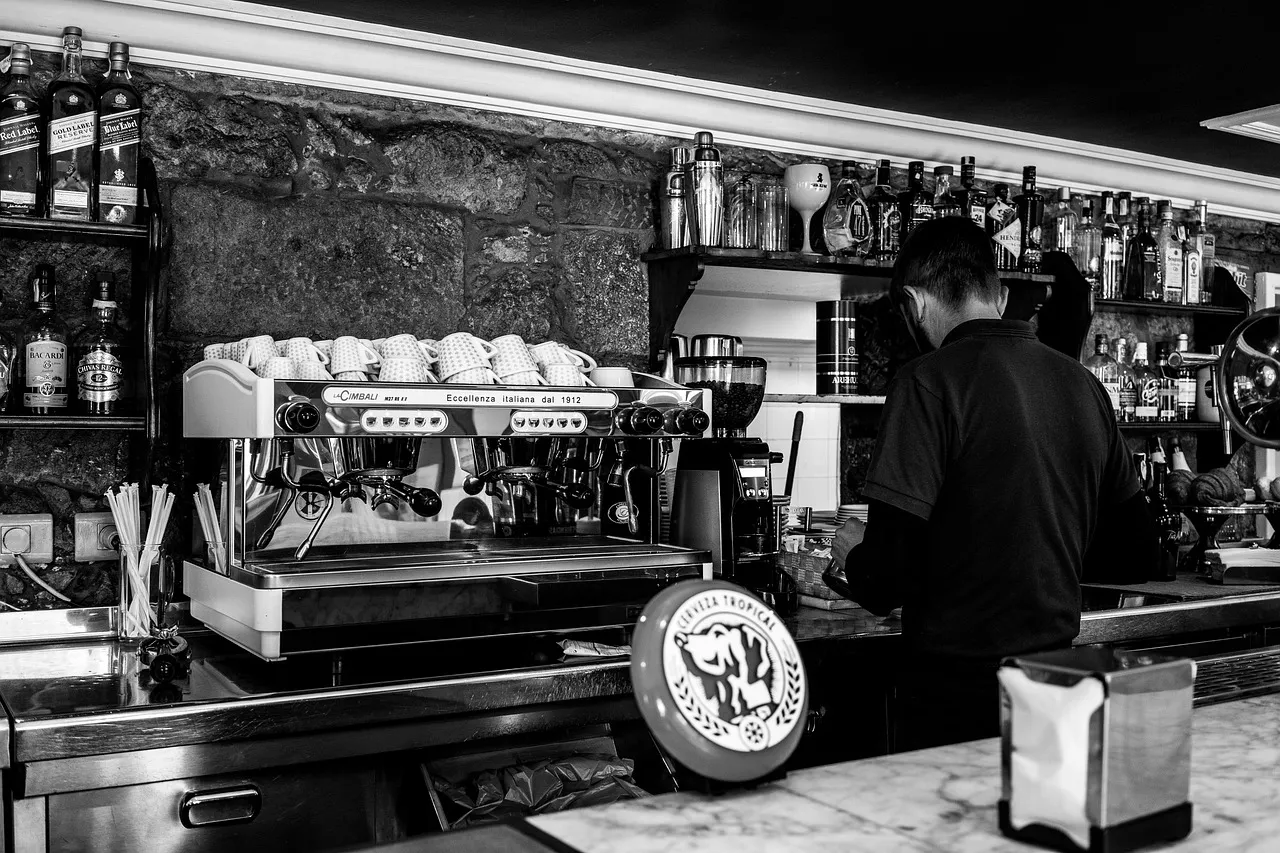The History of Espresso Machines
Espresso, a concentrated form of coffee that originated in Italy, has a rich history that dates back to the late 19th century. The first espresso machine was invented by Angelo Moriondo in 1884 and was a breakthrough in the world of coffee brewing. This early machine used steam pressure to force water through the coffee grounds, resulting in a quick and intense extraction. Over the years, espresso machines have evolved, incorporating new technologies and techniques to achieve better control over the brewing process. Today, we have a wide range of espresso machines available, each with its own unique features and brewing methods.
Different Types of Espresso Machines
Espresso machines can be broadly categorized into four main types: manual, semi-automatic, automatic, and super-automatic. Manual espresso machines, also known as lever machines, allow the user to have complete control over the brewing process. They require manual pressure to extract the espresso and are often favored by coffee enthusiasts who enjoy the hands-on experience. Semi-automatic machines, on the other hand, automate the water delivery but leave the grinding and tamping to the user. These machines strike a balance between control and convenience, making them popular among home baristas. Automatic machines take it a step further by automating the entire espresso-making process, from grinding to extraction. Finally, super-automatic machines are the most advanced and convenient, handling everything from bean grinding to milk frothing with just a push of a button.
The Art of Brewing Espresso
Brewing the perfect cup of espresso is both a science and an art. It requires careful attention to various factors, such as the grind size, water temperature, and extraction time. The first step in the brewing process is selecting the right beans. Different beans have different flavor profiles, and choosing the right ones can greatly enhance the taste of your espresso. Once you have your beans, it's essential to grind them to the right consistency. The size of the grind affects the extraction rate, with finer grinds extracting faster and coarser grinds extracting slower. The water temperature is another critical factor to consider. Ideally, the water should be between 195°F and 205°F for optimal extraction. Finally, the extraction time, or the time it takes for the water to pass through the coffee grounds, should be around 25 to 30 seconds. This ensures a well-balanced and flavorful cup of espresso.
Factors that Affect the Taste of Espresso
Several factors contribute to the taste of espresso, and understanding them can help you achieve the perfect brew. One of the most important factors is the freshness of the coffee beans. Coffee beans are at their best within two weeks of being roasted, so it's crucial to use freshly roasted beans for the best flavor. The roast level also affects the taste, with lighter roasts highlighting the natural flavors of the beans and darker roasts offering a more robust and intense flavor profile. Another factor to consider is the water quality. The water used for brewing should be free from impurities and have the right mineral content to enhance the coffee's flavors. Additionally, the brewing ratio, which refers to the amount of coffee used in proportion to the water, can greatly impact the taste. Finally, the cleanliness of the espresso machine plays a role in maintaining the integrity of the flavors. Regular cleaning and maintenance are essential to prevent any buildup that could affect the taste of the espresso.
Choosing the Right Espresso Machine for Your Needs
When it comes to choosing an espresso machine, there are several factors to consider. First, think about your brewing preferences. Do you prefer a hands-on brewing experience or the convenience of automation? Next, consider your budget. Espresso machines can vary greatly in price, so it's important to set a budget and find a machine that offers the features you need within that range. It's also worth considering the size of the machine and how it will fit into your kitchen space. Finally, read reviews and do your research to ensure you choose a reliable and reputable brand that offers good customer support and warranty options.
Essential Accessories for Brewing Espresso
To enhance your espresso brewing experience, there are a few essential accessories that you may want to consider. First and foremost, a good quality coffee grinder is a must. Grinding your beans just before brewing ensures maximum freshness and flavor. Additionally, a tamper is necessary to evenly distribute the coffee grounds and create a compact puck for optimal extraction. A milk frother or steam wand is also useful if you enjoy milk-based espresso drinks like cappuccinos or lattes. Finally, investing in a good set of espresso cups can enhance the presentation and enjoyment of your espresso.
br/>
Step-by-Step Guide to Brewing the Perfect Cup of Espresso
Now that we've covered the basics, let's dive into the step-by-step process of brewing the perfect cup of espresso:
1. Start by grinding your coffee beans to the desired consistency. 2. Preheat your espresso machine and portafilter. 3. Distribute the coffee grounds evenly in the portafilter. 4. Use a tamper to apply even pressure and create a compact puck. 5. Attach the portafilter to the espresso machine and start the extraction. 6. Watch the espresso flow, aiming for a steady stream of dark, caramel-colored liquid. 7. Stop the extraction when you have reached the desired volume. 8. Enjoy your freshly brewed espresso!
Remember, practice makes perfect, so don't be discouraged if your first few attempts are not as great as you hoped. With time and experience, you will master the art of brewing espresso.
Common Mistakes to Avoid When Brewing Espresso
Even seasoned baristas can make mistakes when brewing espresso. Here are some common pitfalls to avoid:
1. Using stale or low-quality coffee beans. 2. Grinding the beans too fine or too coarse. 3. Inconsistently tamping the coffee grounds. 4. Brewing with water that is too hot or too cold. 5. Over-extracting or under-extracting the espresso. 6. Neglecting to clean and maintain the espresso machine regularly.
By being mindful of these mistakes and taking the time to perfect your brewing technique, you can avoid common pitfalls and consistently brew delicious espresso.
Maintenance and Cleaning of Espresso Machines
To ensure the longevity and optimal performance of your espresso machine, regular maintenance and cleaning are essential. Here are a few tips to keep your machine in top shape:
1. Clean the portafilter and group head after each use. 2. Backflush the machine regularly to remove any coffee residue. 3. Descale the machine periodically to remove mineral buildup. 4. Replace worn-out parts, such as gaskets or shower screens, as needed. 5. Follow the manufacturer's instructions for specific maintenance tasks.
Taking care of your espresso machine will not only extend its lifespan but also ensure that each cup of espresso is as delicious as the last.
Exploring Different Brewing Methods and Recipes
While espresso is the foundation of many coffee-based drinks, there are countless other brewing methods to explore. From pour-over to French press, each method offers a unique flavor profile and brewing experience. Experimenting with different brewing methods can be a fun and educational way to expand your coffee knowledge. Additionally, exploring different recipes, such as flavored syrups or latte art techniques, can add a creative touch to your coffee creations.
Conclusion
From the rich history of espresso machines to the art of brewing the perfect cup, the world of coffee is a captivating and ever-evolving realm. Whether you're a coffee lover or simply curious about the craft, understanding the intricacies of espresso machines and the brewing process can lead to a deeper appreciation for this beloved beverage. Remember, it's not just about the equipment or the technique—it's about the passion and dedication that go into every cup. So, grab your favorite beans, fire up your espresso machine, and embark on your own journey into the world of espresso. Cheers to the perfect cup!

 Recipes of June A Culinary Journey through Summer Flavors
Recipes of June A Culinary Journey through Summer Flavors Unveiling the Must-Have Blenders of 2023
Unveiling the Must-Have Blenders of 2023



